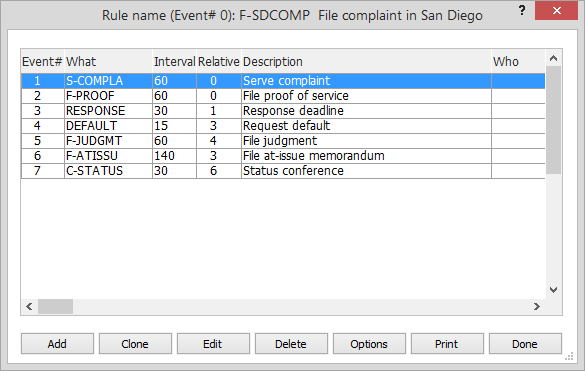Rule Example
This example or a rule is simplified for demonstration purposes and does not reflect current court rules.
When your firm files a complaint in San Diego, you have a set series of generic events that have to happen:
-
You serve the complaint and file proof of service within 60 days.
-
You respond within 30 days of filing the complaint.
-
You request a default 15 days after responding.
-
You file a judgment 60 days after requesting a default.
-
You file an at-issue memorandum 140 days after responding.
-
You provide status conference 30 days after filing the at-issue memorandum.
Since this is a tried-and-true process for you, you set up a rule called F-SDCOMP ("File complaint in San Diego") that includes these predictable steps and their timing, like this:

Note that each rule event is identified with an Event #. Each interval shows the timing of the rule event and the relative value indicates which rule event the current rule event is relative to. For example, DEFAULT will be scheduled 15 days after Event #3 (RESPONSE); C-STATUS will be scheduled 30 days after Event #6 (F-ATISSU); and so on.
The next time you have to file a complaint in San Diego, you schedule the first rule event with the F-SDCOMP rule and the rest of the rule events involved are scheduled automatically for you.